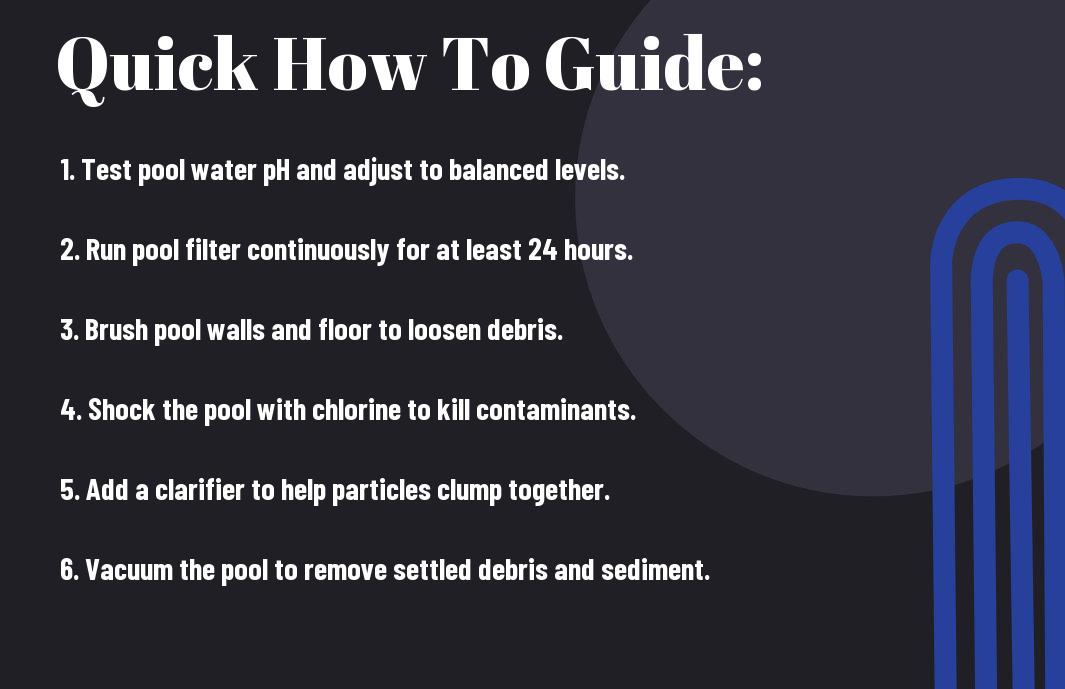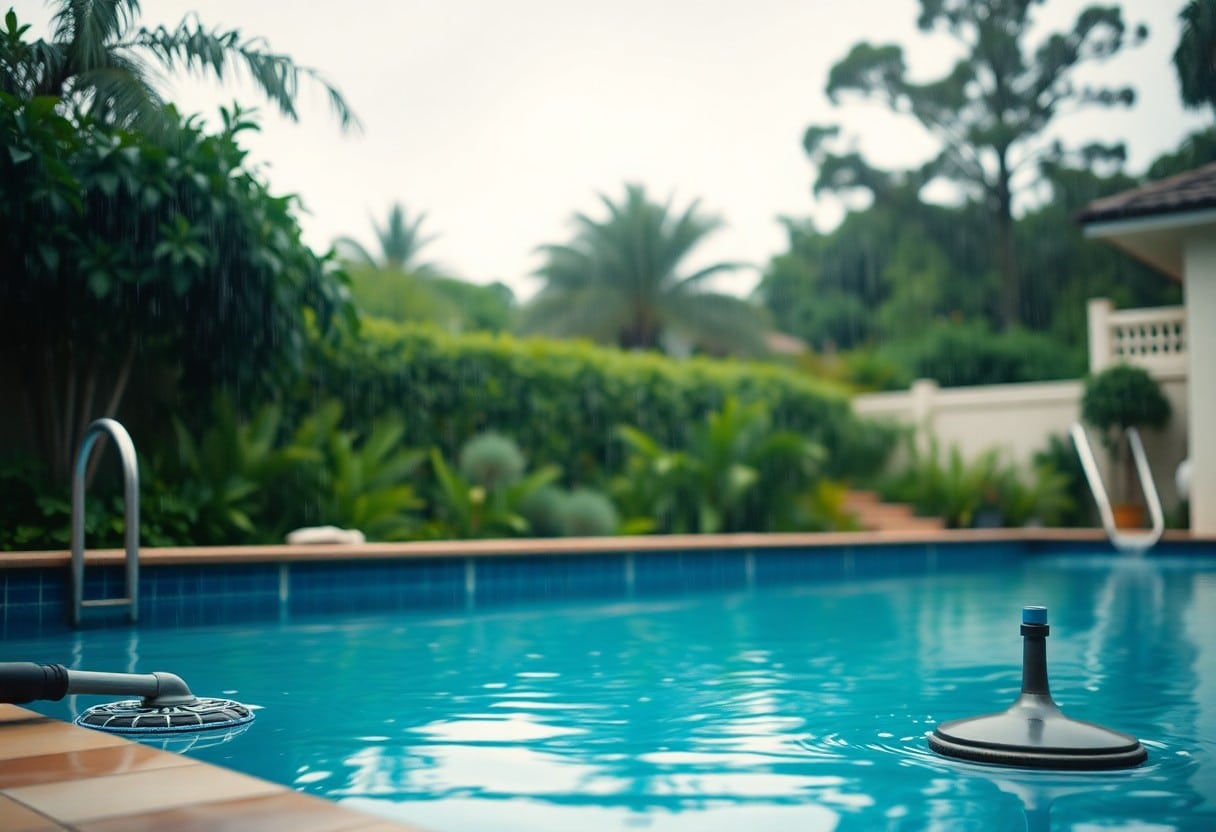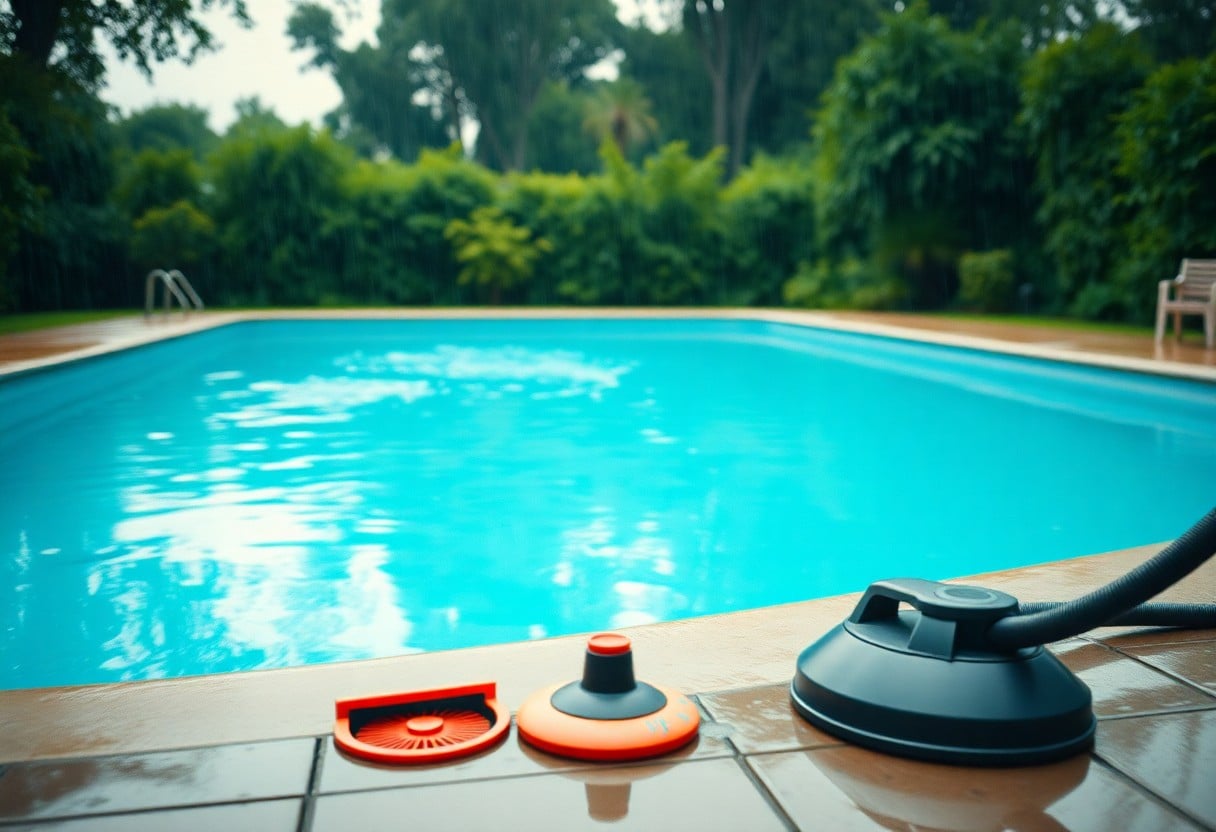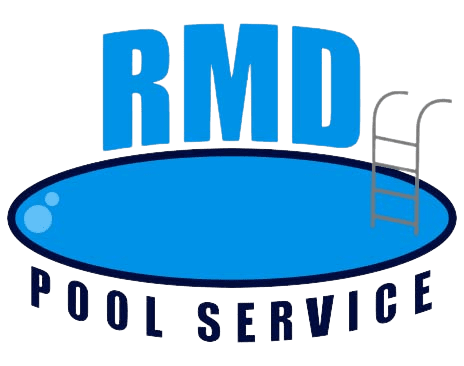Pool maintenance can be particularly challenging after a rainstorm, as heavy rainfall can introduce debris, dirt, and contaminants into your water, resulting in cloudiness. If you find yourself facing this issue, don’t worry—restoring your pool to its sparkling state is achievable with the right steps. In this guide, you’ll learn effective techniques to tackle cloudy water, from testing your chemical levels to employing filtration and cleaning methods that will leave your pool inviting and clear once again.
Assessing Damage: Evaluating Your Pool’s Condition
After a rainstorm, take a moment to assess the overall condition of your pool. Look for visible signs of debris, algae growth, or changes in water level. Rain can introduce not only water but also contaminants that compromise the cleanliness of your pool. This thorough evaluation paves the way for effective remediation, allowing you to restore your pool to its optimal state.
Analyzing Water Clarity
Clear water is a sign of a healthy pool. Once the storm has passed, examine the water for cloudiness. If visibility is impaired and you cannot see the bottom, the water’s chemical balance has likely been disrupted. Run your hand through the water; if it feels murky, further action is necessary to identify and tackle the issue.
Identifying Contaminants
Identifying potential contaminants is important to restoring your pool’s clarity. Rainwater can carry dirt, leaves, and organic materials, which often settle at the bottom or float on the surface. Additionally, the influx of rain can dilute your pool chemicals, leading to the growth of bacteria and algae. Performing a water test will help determine your pool’s pH, chlorine, and alkalinity levels, guiding you toward the necessary adjustments.
Pay special attention to familiar contaminants such as pollen, mud, insects, and even animal waste, which rain can wash into your pool. A comprehensive test will not only reveal pH and chlorine levels but also indicate whether other chemicals like phosphates are present. High phosphate levels can fuel algae growth, compounding the issue. Regular monitoring of these elements will ensure you can address any problems swiftly and keep your pool sparkling clean after every storm.


Essential Tools and Chemicals for Recovery
Restoring pool clarity after a rainstorm requires the right tools and chemicals at your disposal. Having these crucials on hand ensures a swift and effective response to cloudy water. You’ll need a dependable pool skimmer, vacuum, and a testing kit. Chemical shock treatments, flocculants, algaecides, and clarifiers will also play significant roles in your recovery process, helping you achieve that crystal-clear water you desire.
Gathering the Right Equipment
Begin by collecting the necessary equipment before plunging into the recovery process. A reliable skimmer is vital for removing debris that may have accumulated on the surface. A vacuum will help you tackle the floor of the pool, while a brush will assist in scrubbing the walls and corners. Don’t forget about a quality water testing kit, as it will help you understand your pool’s chemical levels and guide your treatment approach.
Choosing Effective Pool Chemicals
Selecting the right pool chemicals can significantly expedite the clarity restoration process. Start with a shock treatment to eliminate contaminants and break down organic material. Afterward, using a flocculant will encourage small particles to clump together, making them easier to remove. An algaecide can help prevent algae growth sparked by nutrient influx from rainwater, while a clarifier will ensure any lingering cloudiness disappears by clearing the suspended particulates that cause murkiness.
The Immediate Response: Initial Actions to Take
After a rainstorm, swift action can significantly improve the clarity of your pool water. Begin by assessing the water level; if it’s too high due to rain, you’ll need to drain some water to ensure proper circulation. Next, inspect and clean your skimmer and pump baskets to remove any debris that might impede water flow. This prevents contaminants from lingering and helps in restoring water clarity more efficiently.
Skimming and Vacuuming Techniques
Utilize a skimmer net to remove leaves, twigs, and other debris from the pool surface. Aim to skim daily following a rainstorm to eliminate impurities promptly. Once the surface is clean, deploy a vacuum to tackle the bottom of the pool, concentrating on areas where dirt settles. For best results, choose a vacuum designed for your pool type—manual options provide precision, while automatic vacuums save time and effort.
Adjusting Water Levels and Balancing pH
After completing the first steps, focus on adjusting water levels and balancing pH for optimal pool conditions. The ideal pH for pool water falls between 7.4 and 7.6, important for effective chlorine function and swimmer comfort. Use a pH testing kit to check the levels, then add pH increaser or decreaser as necessary. If rainfall has diluted your chemical levels, rebalance your sanitizer and alkalinity for clearer, healthier water.
Monitoring and adjusting water chemistry should be a regular part of your pool maintenance routine, particularly after heavy rains, when runoff can introduce various contaminants. Testing the levels should include total alkalinity and chlorine concentrations to ensure a balanced environment conducive to swimming. If your pH is out of balance, it may lead to eye irritation and cloudy water, making timely adjustments vital. Regularly checking these levels keeps your pool inviting and safe for you and your guests.

Restoration Process: Step-by-Step Instructions
| Step | Action |
| 1 | Test water chemistry to assess pH, chlorine, and alkalinity levels. |
| 2 | Adjust pH levels to the recommended range (7.2-7.6). |
| 3 | Shock the pool to eliminate contaminants. |
| 4 | Run the filtration system continuously for 24-48 hours. |
| 5 | Clean the filter and remove any debris from the skimmer and pump baskets. |
Shock Treatment Procedures
To effectively clear up cloudy pool water, begin with a shock treatment. Add shock treatment (calcium hypochlorite or liquid chlorine) at a dosage of 1 pound per 10,000 gallons of water. Broadcast it evenly across the pool’s surface during evening hours to maximize effectiveness. Allow the pool to circulate for at least 24 hours before retesting the water chemistry and determining if further adjustments are necessary.
Filtration and Circulation Strategies
Implement robust filtration and circulation strategies to maintain clear water. Run your pool’s filtration system continuously for at least 24 hours after shocking to ensure contaminants and cloudy particles are effectively removed. Regular cleaning of the filter and skimmer will also prevent build-up, enhancing circulation. Investing in a high-quality filter equipped with a larger capacity can significantly improve water clarity by trapping smaller particles more efficiently.
Proactive Measures: Preventing Future Cloudiness
Taking steps before a storm hits can save you the hassle of dealing with cloudy water later. Regular testing of your pool’s water chemistry ensures balance, keeping pH, alkalinity, and chlorine levels stable. Keeping your pool clean by skimming debris and vacuuming regularly can prevent organic waste from disrupting water clarity. Additionally, maintaining proper circulation through your pump and filter can help filter out contaminants before they lead to cloudiness.
Regular Maintenance Routines
Establishing a consistent maintenance routine is key to clear pool water. Perform weekly tests on your water chemistry and adjust the balances as needed. Regularly skimming leaves and debris off the surface keeps your pool clean and prevents organic waste from triggering algae blooms. Vacuuming the pool bottom and brushing walls should be part of your routine to eliminate settled dirt.
The Role of Pool Covers
Utilizing a pool cover is an effective strategy to prevent contamination, especially during rainstorms. A quality cover will block debris and rainfall from entering, reducing the need for subsequent clean-up efforts. By investing in a good pool cover, you can maintain the chemical balance and clarity of your pool water, decreasing the chances of cloudiness forming after a storm.
Conclusion
Taking this into account, clearing up cloudy pool water after a rainstorm involves several key steps: testing your water chemistry, adjusting pH and chlorine levels, and using a good pool filter. Additionally, brushing and vacuuming your pool will help remove debris that contributes to cloudiness. By staying proactive and following these guidelines, you can restore the clarity of your pool quickly, ensuring your swimming experience remains enjoyable and safe. It’s important to maintain regular maintenance to prevent future issues. Your diligent efforts will pay off in a sparkling clean pool.
